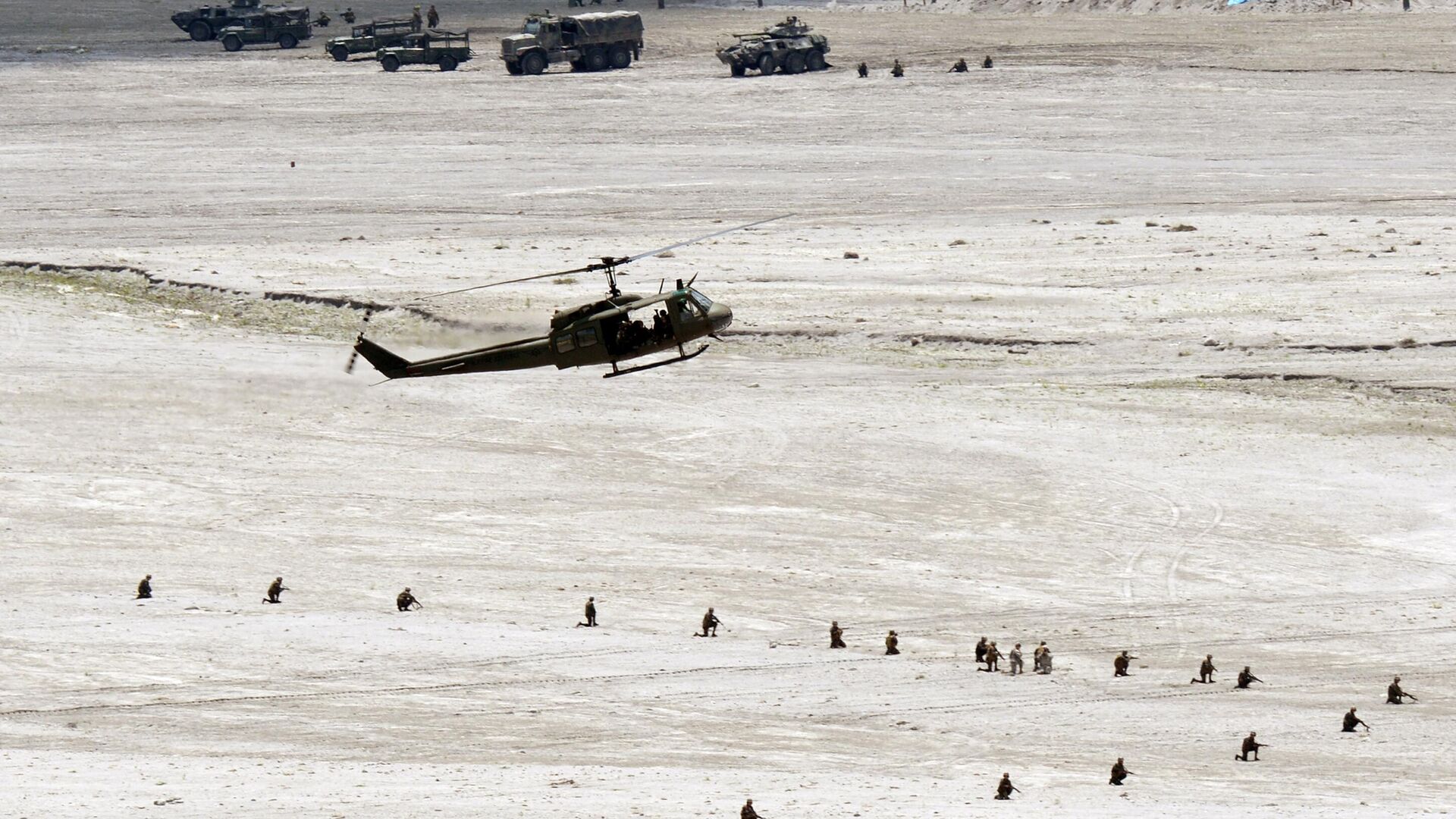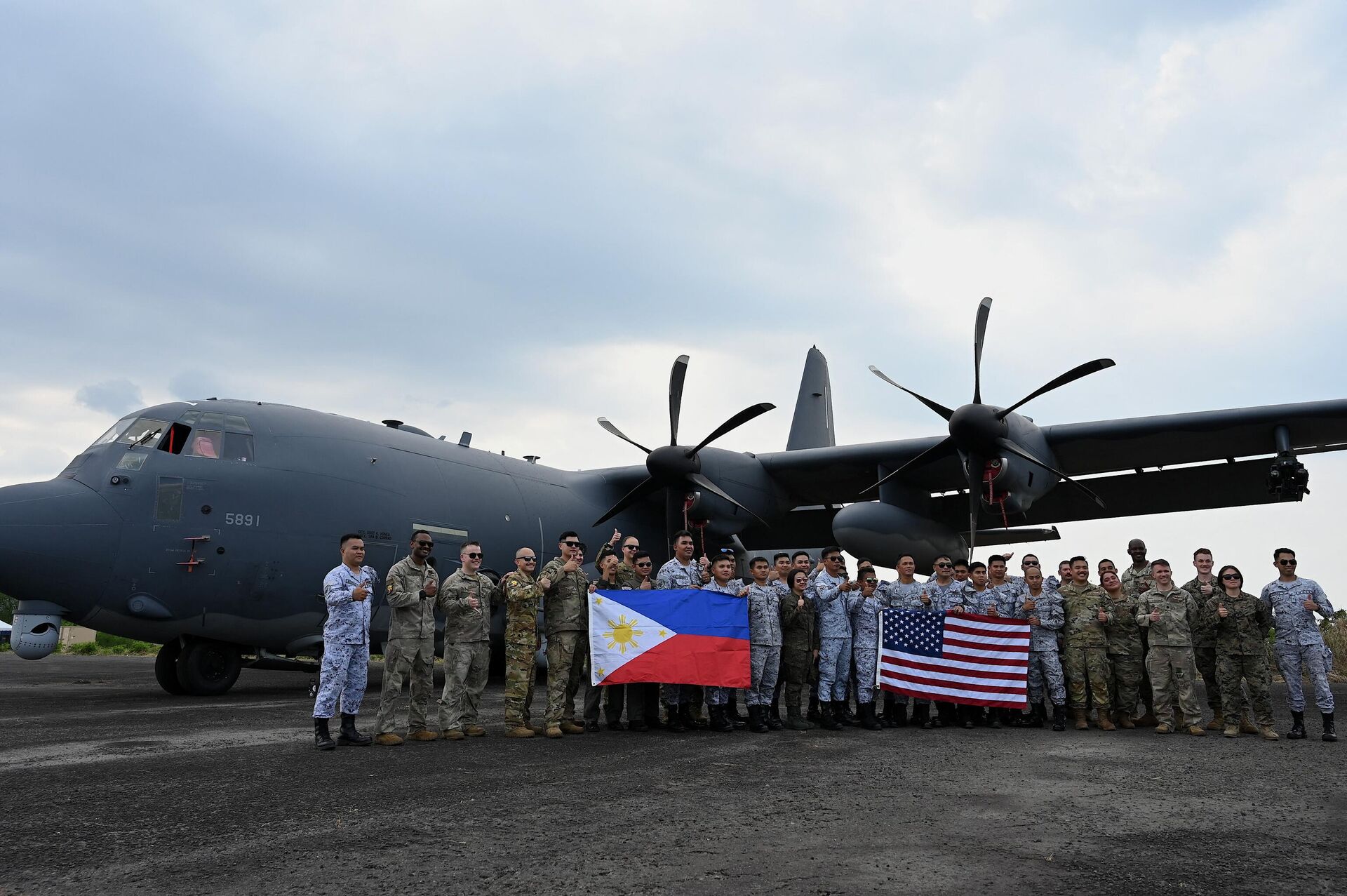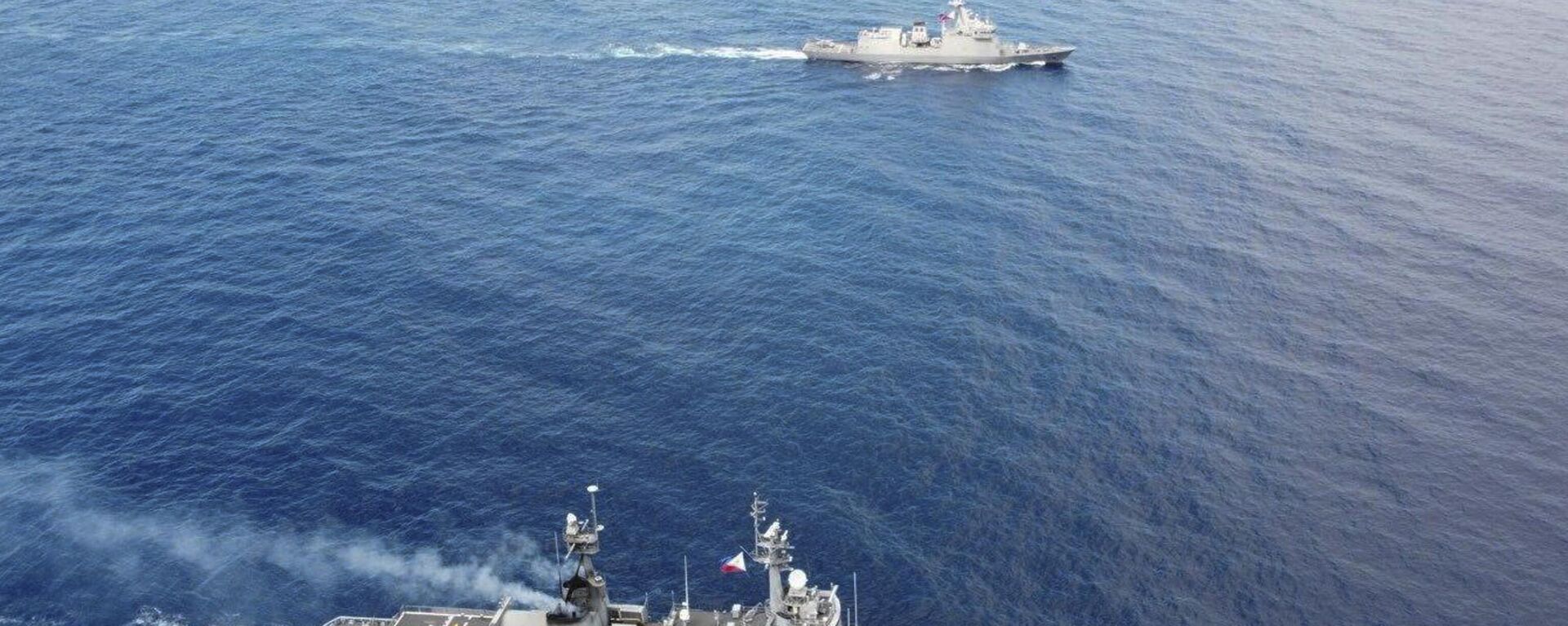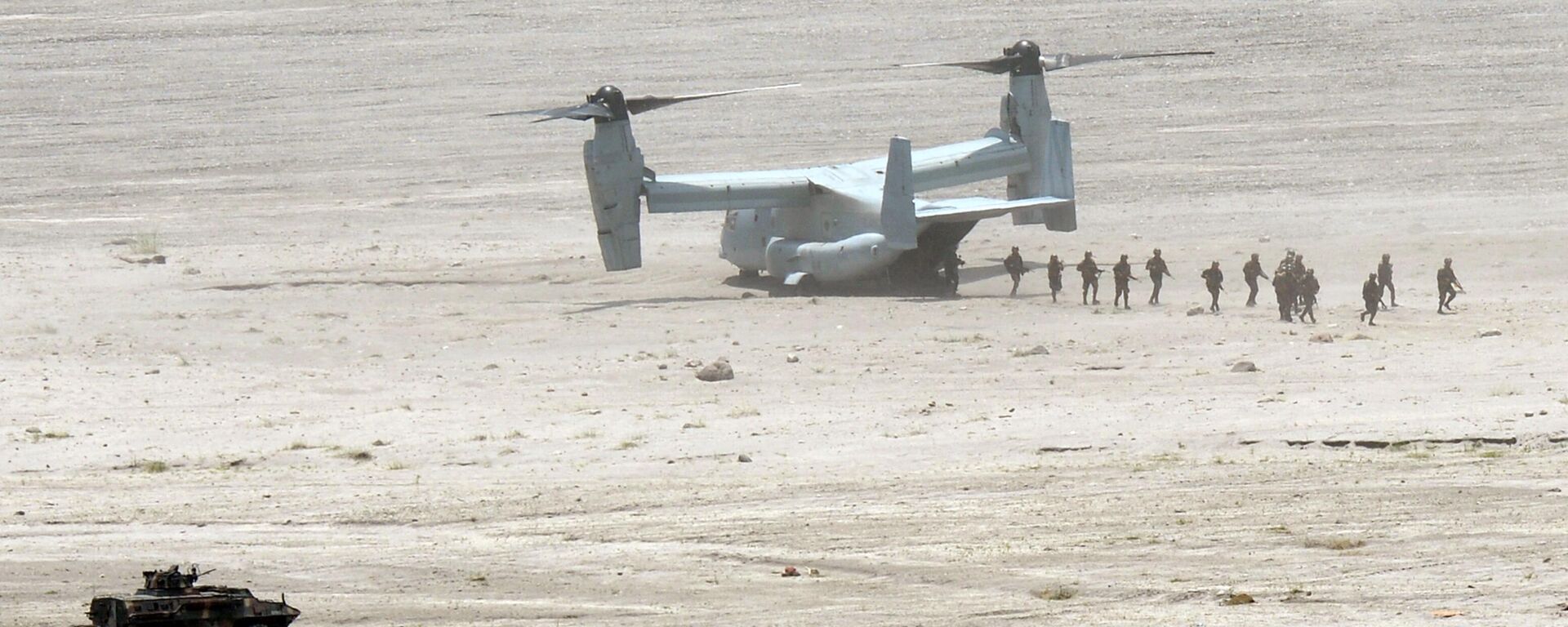Expansive US-Philippines War Games Slammed by China as Tension-Stoking & Muscle-Flexing

© AFP 2023 / TED ALJIBE
Subscribe
Balikatan, a joint annual US-Philippines military exercise that started in 1991, is markedly ratcheting up tensions in the region on this occasion. In a historic first, the drills are also taking place outside of the Philippines’ territorial waters, near the South China Sea, where both Beijing and Manila have territorial claims.
Large-scale US-Philippines drills kicked off on Monday amid China warning that they risk stoking tensions to dangerous levels. Beijing has slammed several aspects of the current war games as fraught with exacerbating regional tensions.
These appear to be the second-largest Balikatan ("Shoulder-to-Shoulder" in Filipino) drills since introduced in 1991. Set to run until May 10, they involve around 11,000 US and 5,000 Philippine troops. Training activities are set to range from maritime security and air defense operations to cyber and information defense.
Some of the drills will also involve other countries, such as Australia and France, in secondary roles.
14 nations will reportedly act as observers, including India, Japan, as well as some ASEAN and European Union countries.
In a first, six Philippine Coast Guard (PCG) vessels will participate in the drills in an active role.
The drills will simulate seizing islands in the vicinity of Taiwan and South China Sea.
For the first time, the exercises will be held at multiple Philippine locations, 12 nautical miles offshore, outside of the country's territorial waters, near the disputed South China Sea – waters that are claimed by both China and the Philippines.
The maiden deployment by the US military of the Mid-Range Capability missile system in the Philippines has been denounced as contributing to a regional arms race.

US and Filipino soldiers on April 23, 2023, as part of the US-Philippines joint military exercise ‘Balikatan’.
© AFP 2023 / JAM STA ROSA
Chinese Foreign Ministry spokesman Lin Jian said the Philippines "should understand that drawing in countries outside the South China Sea to flex their muscles and stoke confrontation in the region will only intensify tensions and undermine regional stability." Lin said that by seeking to bolster its security using external forces, the Philippines "will only put itself into greater insecurity, and even become the pawn of others."
China is committed to using dialogue to resolve maritime disputes, but will not allow itself to be “abused,” said Zhang Youxia, vice-chairman of China’s Central Military Commission, in response to the drills. Countries involved in the drills are seeking to flex their “gunboat muscles,” he warned at a biennial meeting of the Western Pacific Naval Symposium in Qingdao on Monday.
“Reality has shown that those who make deliberate provocations, stoke tensions, or support one side against another for selfish gains will ultimately only hurt themselves,” Zhang added. He further noted that attempts to carry out “maritime containment, encirclement and island blockades will only plunge the world into a vortex of division and turbulence.”
The joint naval exercises have prompted China's military to respond with its own increased naval and air patrols in the South China Sea.
Earlier in April, when the United States, Japan, Australia, and the Philippines announced plans to conduct joint naval exercises in the South China Sea – their first such collaborative military effort in the region – a chorus of voices warned of the dangerous implications.
China claims most of the South China Sea. However, the territorial affiliation of some islands and reefs in the area, such as the Philippine-controlled Second Thomas Shoal, has been the subject of disputes between Beijing and Manila, as well as several other Asia-Pacific countries for decades.
Amid rising tensions between Beijing and Manila over the disputed waters in the South China Sea, the Philippines – a key US ally in the region that hosts its military bases – has repeatedly accused Chinese ships of conducting “dangerous” maneuvers.
Beijing, in turn, has claimed that the Philippines is "roping in non-regional countries" to inflame tensions. China has on numerous occasions also warned that joint US military exercises undermine its security interests.
🇵🇭 Duterte warns Philippines “US will not die for us.”
— Sputnik (@SputnikInt) April 12, 2024
Philippine former president Rodrigo Duterte has called for his country to reverse its antagonistic course with China in an interview with Global Times. What else did he say?
🔺 Warned that current President Marcos Jr. is… pic.twitter.com/9PR46EVwNK
The Chinese media earlier slammed the "extremely negative" nature of the expansive joint drills.
"The Philippine Coast Guard will deploy six vessels for this exercise for the first time," the Global Times, an English-language Chinese daily, noted, adding that, "the navies of the Philippines, the US, and France will conduct trilateral joint patrols for the first time. Compared to the staged nature of the 'sinking exercise,' the several 'firsts' touted by the US and the Philippines pose a substantive threat to regional stability, which should lead regional countries to maintain high vigilance."
In addition, the US Mid-Range Capability missile known as the Typhon, which has a range of up to 2,500 km, was airlifted to the Philippines ahead of the drills. US and Philippine officials assured that there would only be logistical exercises involving the system, ruling out launches.
Russia also deplored the scale and nature of the joint war games. The goal of the joint drills between the United States, Japan, Australia, and the Philippines is to expand NATO into other regions of the world, Maria Zakharova, spokeswoman for the Russian Foreign Ministry, said earlier.






